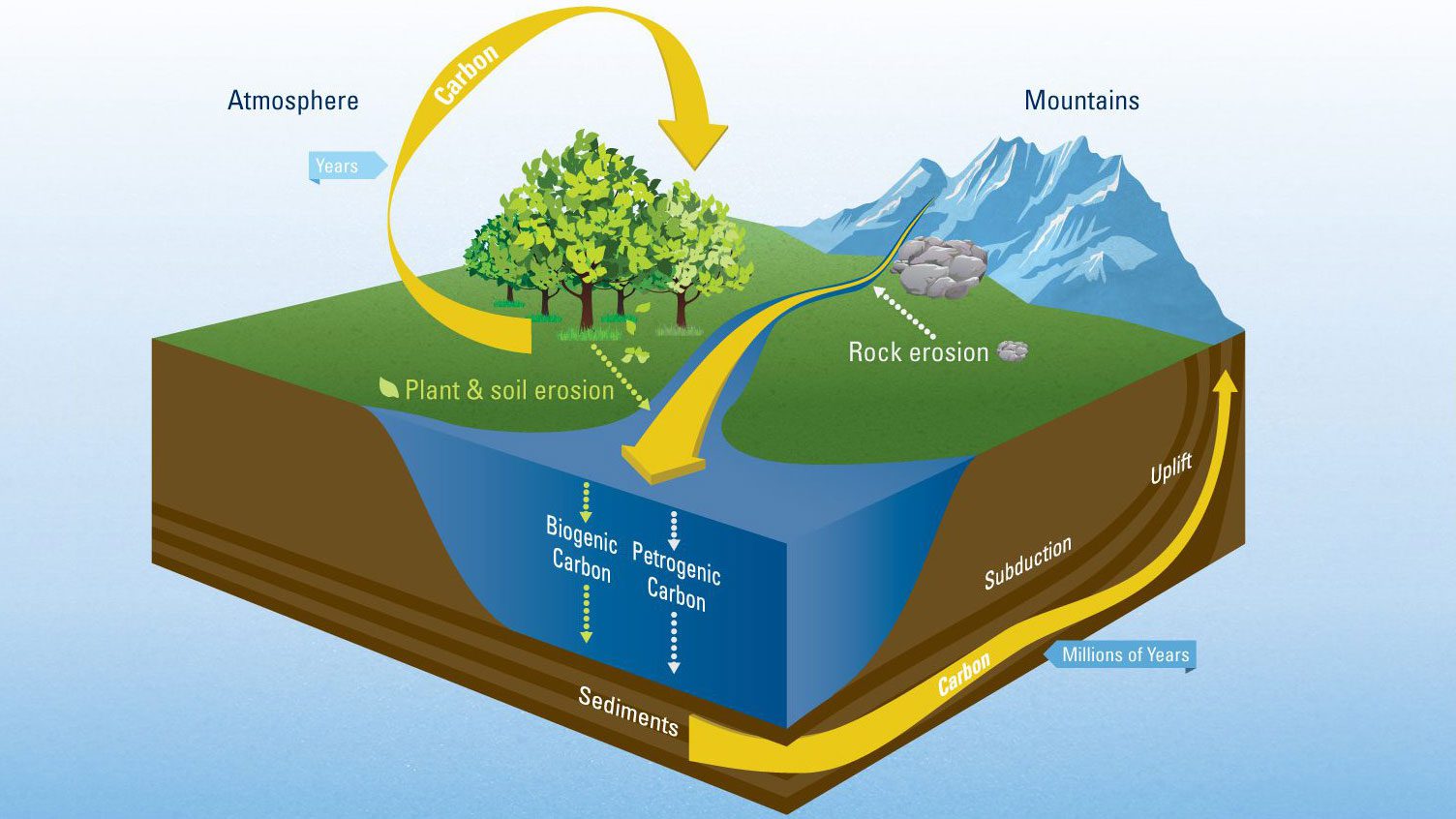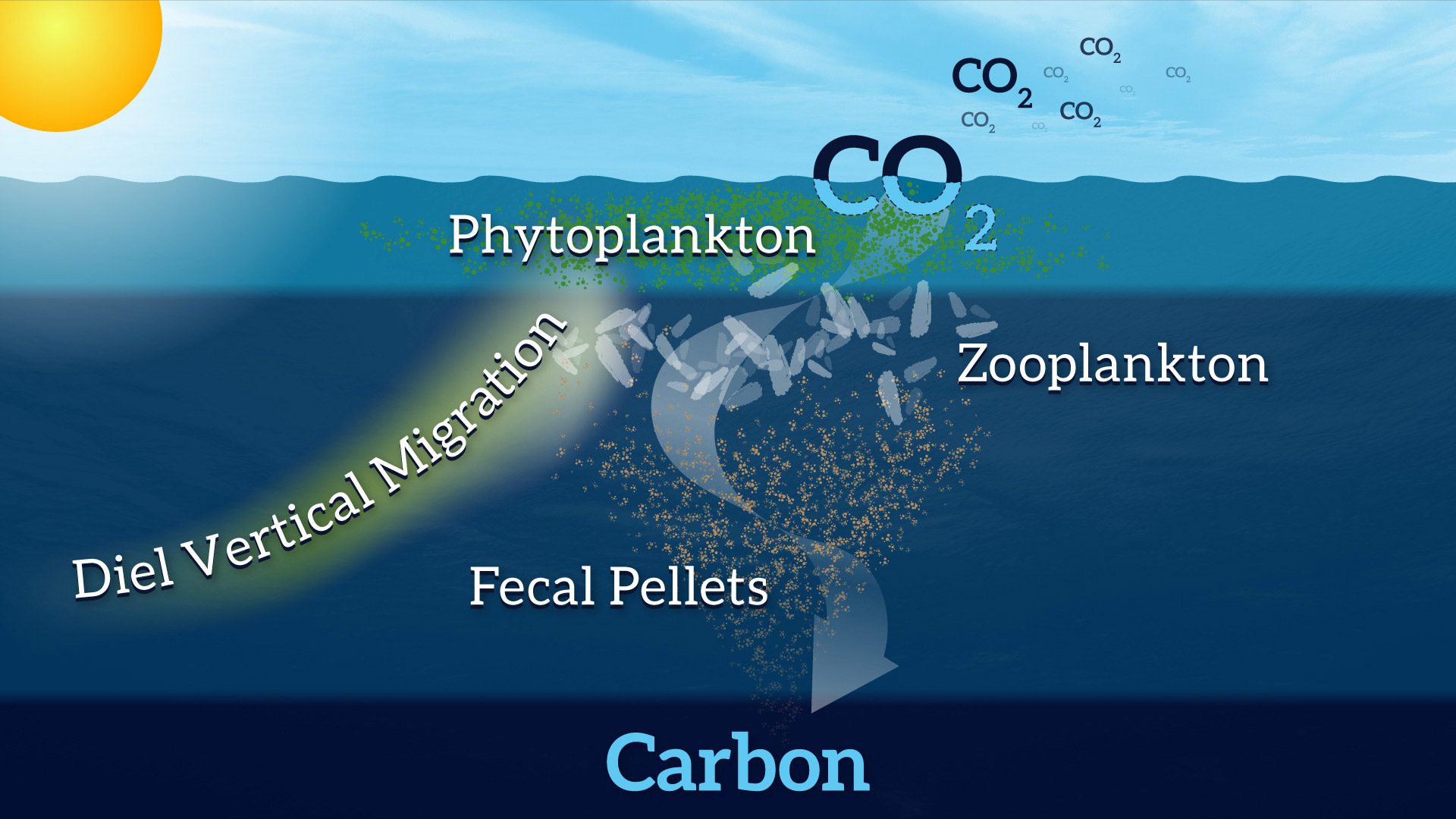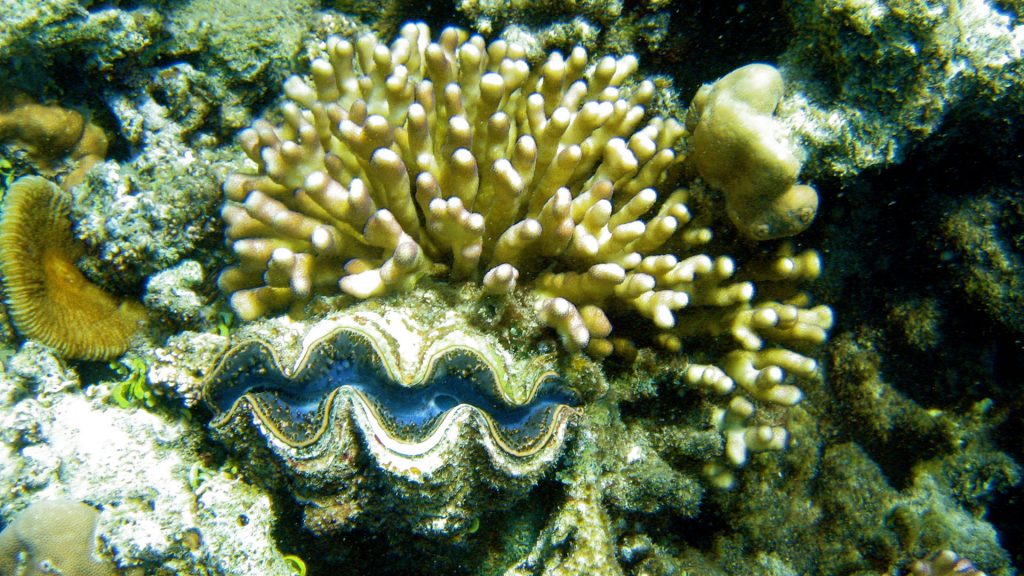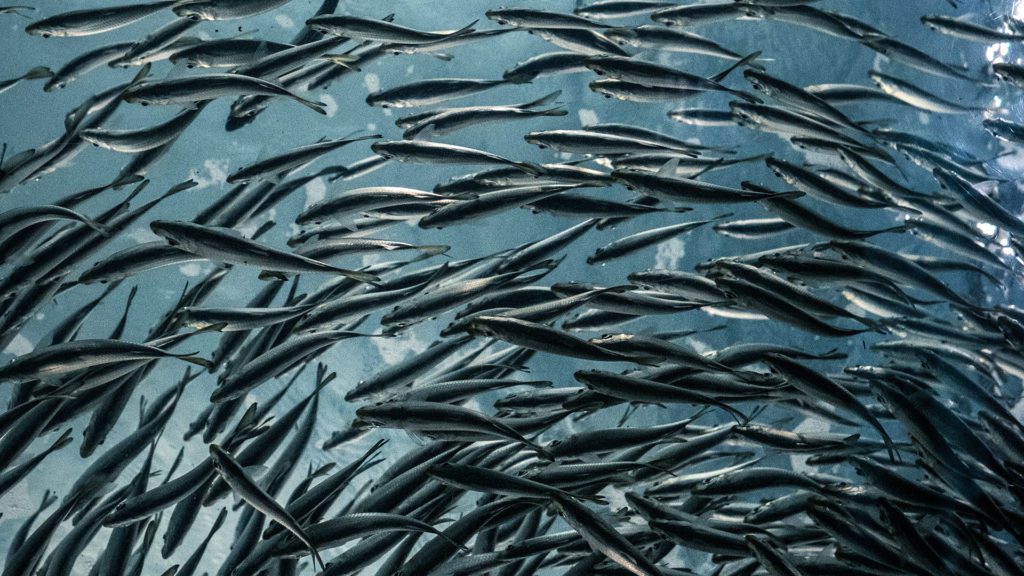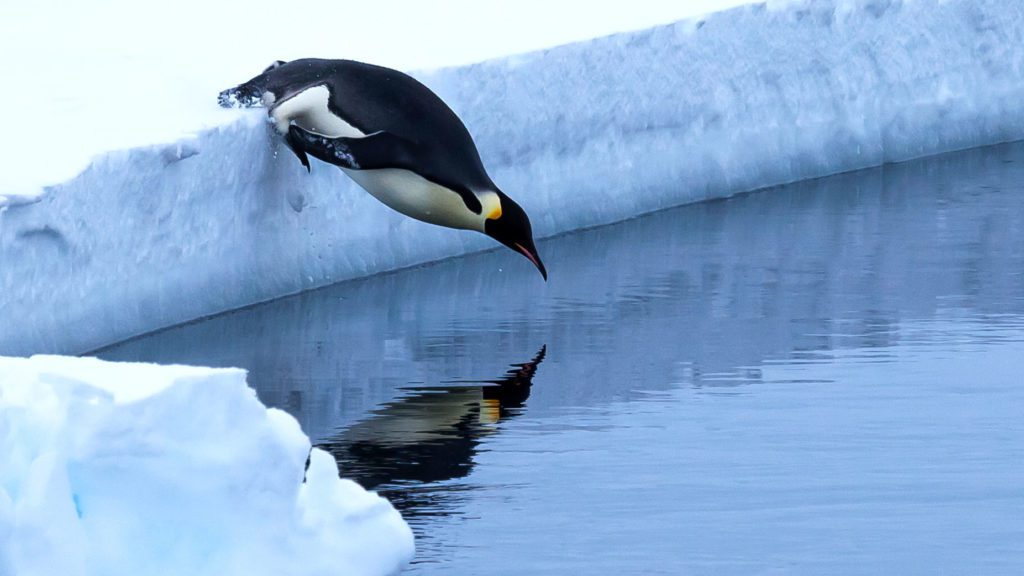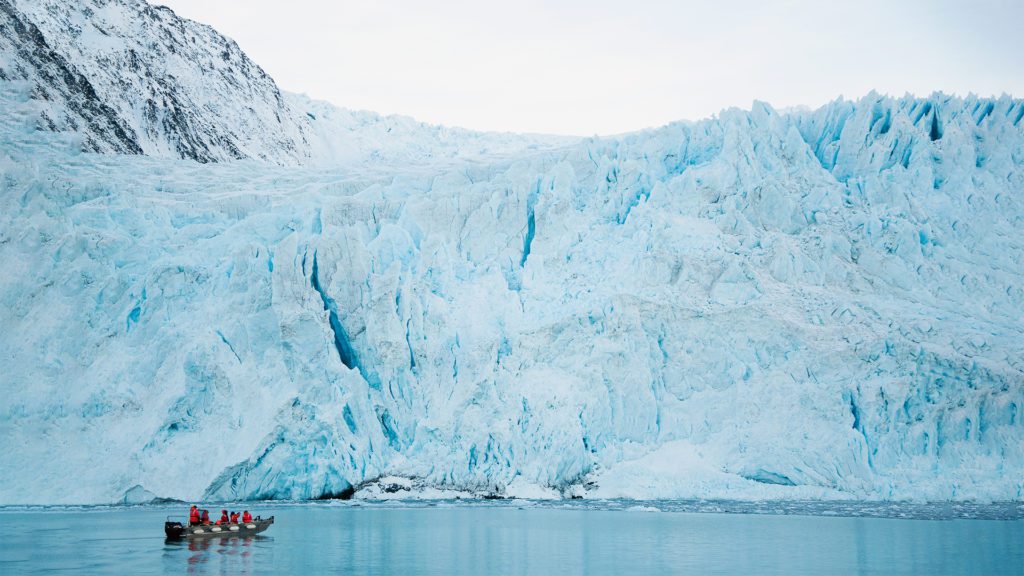Like car windows on a sunny day, carbon dioxide and other greenhouse gases help trap the sun’s heat, keeping it close to Earth’s surface. To an extent, this is a good thing. Without that warming, Earth would be a ball of ice. But too much carbon dioxide in the atmosphere means too much warming. The key to preventing runaway climate change is to remove excess carbon dioxide from the atmosphere, but where can it go?
Carbon isn’t just found in the air. It makes up every living organism on the planet, dissolves into water, and makes up some kinds of rocks. Carbon doesn’t stay in any one of those locations forever. It cycles through them. Sometimes movement from one location to another are fairly quick, like when plants take carbon dioxide from the air and use it to make food for themselves via photosynthesis. Other movements take hundreds of thousands of years, such as when rocks weather into soil, releasing small amounts of carbon as they do.
Movement of carbon dioxide into the atmosphere is usually balanced by movement into other locations. But as people burn more fossil fuels, cut down forests, and drain coastal wetlands, they have released large amounts of carbon dioxide into the atmosphere. To prevent extreme warming, we need to switch the direction this excess carbon dioxide is traveling. Although planting trees can certainly help, the ocean plays a much bigger role.
Some carbon dioxide dissolves into the ocean’s water. In fact, there’s far more carbon dioxide in the ocean than there is in the atmosphere. Phytoplankton and algae use some of that carbon dioxide in photosynthesis. Marine animals eat the plants—or each other—incorporating carbon into their bodies as it moves through the food chain. These animals produce fecal pellets and eventually die. Pellets and carcasses sink to the ocean floor, taking their carbon with them.
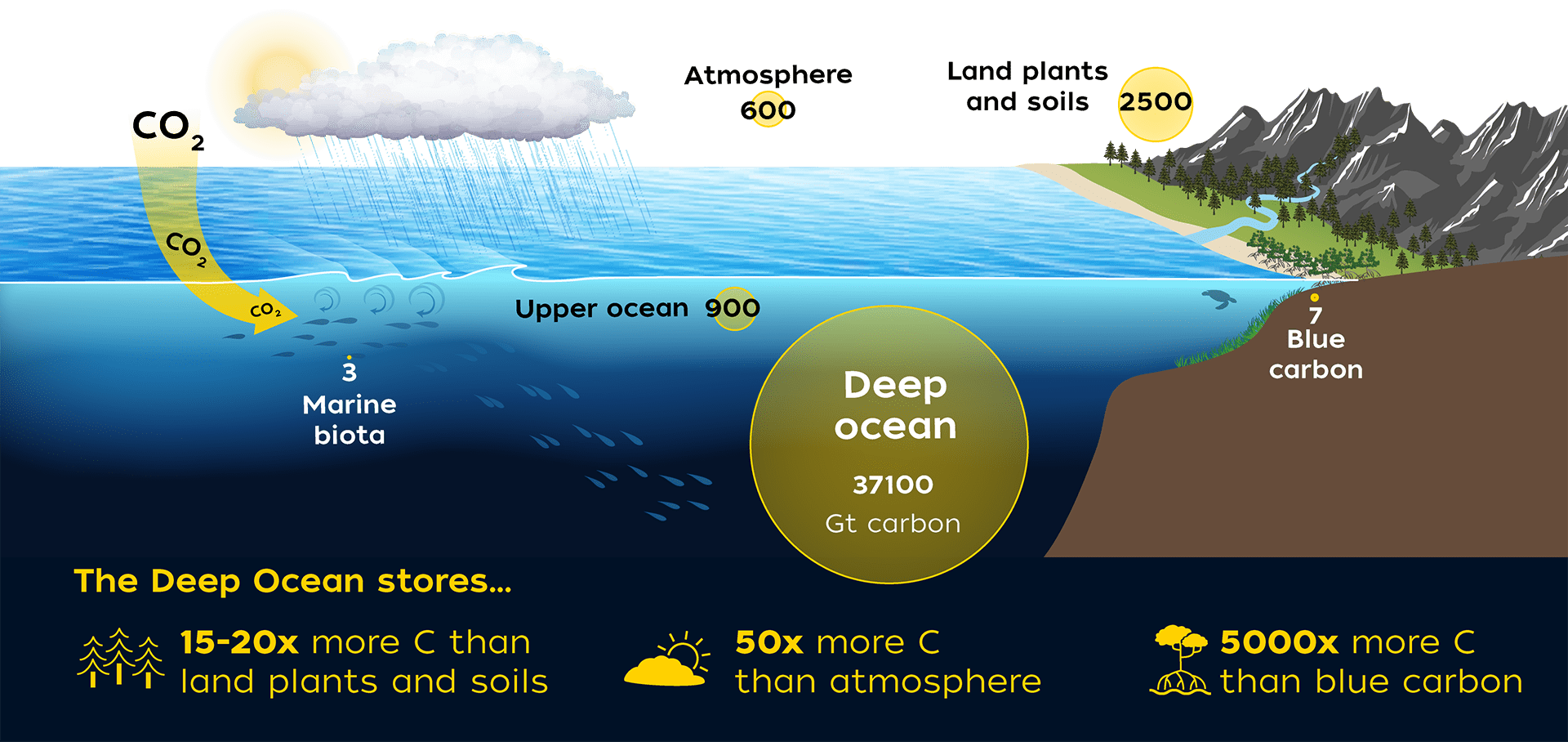
Blue carbon refers to carbon taken up by coastal ecosystems, including seagrass meadows, mangroves, and salt marshes. These plants store some carbon in their roots. But these ecosystems are able to absorb much more carbon than a comparable amount of tropical rainforest. That’s because dead and dying leaves, branches, and other organisms settle into sediment that’s flooded with water, which deprives them of oxygen. Decomposers need oxygen to break down the dead material. Most of what settles in these areas doesn’t decay. Instead, it builds up as part of the sediment, trapping carbon and preventing it from re-entering the atmosphere.
But it’s the deep ocean that plays the biggest role in trapping carbon. Some currents carry water from the surface down into the ocean’s depths. Carbon dioxide in that water mass winds up deep in the ocean—too deep to travel back to the surface. Marine animals that die and sink to the depths may be consumed as they fall or by bottom-dwellers once they land. Their carbon remains along the ocean floor or deep in the water column. These pathways can move carbon far from the atmosphere for hundreds or thousands of years.
Some carbon gets buried in the bottom of the ocean. This happens most easily when deep layers of the ocean are low in oxygen. Bits of organic matter drift to the ocean floor and into the sediment. Over long periods of time, under high pressure, these layers become sedimentary rock, where carbon will remain for hundreds of thousands of years.
RELATED VIDEO
LEARN MORE
Berkeley Understanding Global Change: Carbon Cycle. https://ugc.berkeley.edu/background-content/carbon-cycle/
NASA Earth Observatory. The carbon cycle. https://www.earthobservatory.nasa.gov/features/CarbonCycle
NOAA Climate.gov. Understanding blue carbon. https://www.climate.gov/news-features/understanding-climate/understanding-blue-carbon
Riedinger, N. et al. Persistent deep water anoxia in the eastern South Atlantic during the last ice age. PNAS. Vol. 118. 2021. doi: 10.1073/pnas.2107034118.
DIVE INTO MORE OCEAN FACTS
Are corals plants, animals, or rocks?
The base of a coral reef is coral, but what is coral? If you look at a piece of coral that washed up on shore, it’s solid and tough with rough edges and little pits.
How does ocean warming affect fisheries?
The ocean has absorbed 93% of excess heat from human activities, raising its temperature by 1.5°F since 1901. Warming oceans impact fish migration, leading to conflicts and overfishing.
How do polynyas help feed emperor penguins?
When female emperor penguins—and later, males—return to the ocean to feed, they need a spot that gives them easy access to both the water and the ice. And, they also need places that are teeming with fish and other types of prey. Learn how polynyas provide a place where penguins can feast and build their energy reserves after breeding.
Is glacier ice actually rock?
In places where it gets cold and snowy in winter, many meters of snow can fall. In some the following winter, adding a new layer to what was already there. Over hundreds to thousands of years, this process creates big sheets of ice called glaciers.

